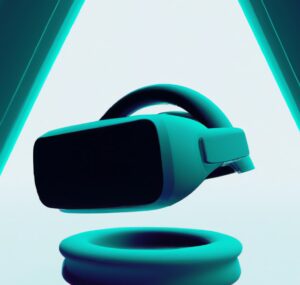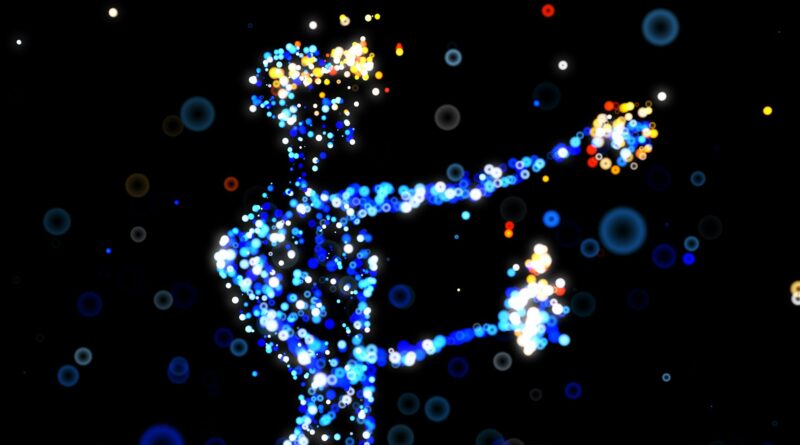Awe and Curiosity: Harnessing the Potential of VR for Student Inquiry
Awe and Curiosity: Harnessing the Potential of VR for Student Inquiry
Alex Urban, PhD, University of Missouri
Jenny Bossaller, PhD, University of Missouri
People are naturally curious, especially kids. They want to know how the world works and ask big awe-inspiring questions: Why is the sky blue? What is sound? What happens to food when we swallow it? Why do I have to sleep? Between childhood and adulthood, educators craft experiences that encourage learners to explore, paving the way for them to actively seek answers after moments of wonder. Some of these children even become trained scientists who unravel the mysteries of the world.
—VR can foster moments of awe and promote inquiry—
How can we, as educators, support student-led inquiry? Awe-inspiring field trips, like traveling to the moon or exploring the human body, are not feasible. But, with virtual reality (VR) headsets becoming more affordable, educators may try immersive technologies to foster moments of awe and promote inquiry.
To explore connections between awe, curiosity, and information seeking, we recently conducted a study guided by the following questions:
- Which VR videos were the most awe-inspiring and curiosity-provoking, and why?
- What information-seeking behaviors, if any, did participants adopt after watching the VR videos, and why?
 For our study, 32 undergraduate students experienced six VR experiences in a laboratory setting. They witnessed (1) the sun’s magnetic cycles, (2) the aftermath of Hurricane Harvey, (3) a forest of bent trees in Poland, (4) a data storage facility inside of a mountain, (5) the effects of the Fukushima nuclear disaster, (6) and the inside of small yet highly intricate gothic prayer beads. Immediately after experiencing these scenes, the students responded to a questionnaire about their feelings of awe and curiosity. They then received a follow-up questionnaire 24 hours later. We then interviewed eight of the ten students who voluntarily conducted information seeking in their spare time.
For our study, 32 undergraduate students experienced six VR experiences in a laboratory setting. They witnessed (1) the sun’s magnetic cycles, (2) the aftermath of Hurricane Harvey, (3) a forest of bent trees in Poland, (4) a data storage facility inside of a mountain, (5) the effects of the Fukushima nuclear disaster, (6) and the inside of small yet highly intricate gothic prayer beads. Immediately after experiencing these scenes, the students responded to a questionnaire about their feelings of awe and curiosity. They then received a follow-up questionnaire 24 hours later. We then interviewed eight of the ten students who voluntarily conducted information seeking in their spare time.
Participants described awe-inspiring VR as being able to transport them to impossible spaces or provide unique access to information. Participants often mentioned feeling a sense of mystery or discovering previously unknown information, highlighting the connection between awe and surprise. In interviews, the participants focused on striking visuals and the mysterious. However, we also found that the most awe-inspiring experiences did not drive curiosity and that some participants were more interested in experiencing the stimuli again rather than seeking additional context, emphasizing the importance of sensory experiences.
Our research didn’t find a clear link between feeling awe and information seeking unless there were distinct feelings of surprise or mystery. The students mainly talked about the sensory side of awe and feeling a sense of immersion, which sometimes led them to search online to re-experience stunning visuals.
In conducting this study, we came to realize that awe poses research challenges because it has flexible boundaries. While it’s typically triggered by encountering vast or profound things, awe can also stem from various experiences like beauty or threat. This highlights the importance of studying awe and its connections to other emotions, like curiosity, in a flexible way. Awe can also include feelings of supernatural causality, which may spark more curiosity compared to other characteristics of awe. For example, when participants searched for information about a mysterious experience, their initial discomfort from not having an explanation shifted to enjoyment upon recognizing the mystery and sensory of the experience. This finding emphasizes that some knowledge gaps don’t necessarily need to be filled with explanations. Instead of always seeking answers, we sometimes just appreciate the wonder of an experience.
Using VR to create awe-inspiring moments might support inquiry, but teachers and researchers should be aware of the limitations of classroom environments. Awe experiences can be hard to plan and not all activities will evoke the same feelings for all students. Yet, using VR in classrooms can be helpful for students who find traditional lectures boring. For example, instead of reading about art or looking at reproductions, teachers could utilize virtual tours that allow students to explore the minute details of a piece of art, turning cerebral learning into an immersive learning experience.
Based on our research, educators looking to include VR experiences for inquiry-based learning should consider the following criteria:
- Perceptual Envelopment: Select VR experiences with detailed visuals that make users feel fully immersed.
- Inaccessible Spaces: Choose experiences that transport users to places they couldn’t otherwise visit, like the cosmos or inside a cell.
- Unexplained Phenomena: Focus on topics that spark curiosity by presenting mysteries or unanswered questions.
- Limited Information: Provide just enough information to guide the experience without giving away all the answers, encouraging users to explore and seek understanding on their own.
However, a word of caution: Educators should offer additional context when using VR to introduce eerie or supernatural experiences. While these encounters can spark curiosity, educators must ensure students don’t solely rely on intuitive explanations. To counter this, educators should provide clear explanations after students explore these phenomena.
Read the authors’ original article: “Exploring enigmas: Information seeking after exposure to virtual reality awe elicitors” in JASIST.
Cite this article in APA as: Urban, A. & Bossaller, J. Awe and curiosity: Harnessing the potential of VR for student inquiry. (2024, March 28). Information Matters, Vol. 4, Issue 3. https://informationmatters.org/2024/03/awe-and-curiosity-harnessing-the-potential-of-vr-for-student-inquiry/
Author
-
Alex Urban, PhD, is the Research & Development Manager at the University of Missouri’s Adroit Studios Gaming Laboratory. He received his doctorate in Information Science and Learning Technologies at the University of Missouri. His research goal is to determine how novel media may promote learning and meaningful experiences. At Adroit, he works with stakeholders across disciplines to produce educational learning games. He is also an instructor at the University of Missouri, where he teaches project management and game-based learning design.
View all posts





